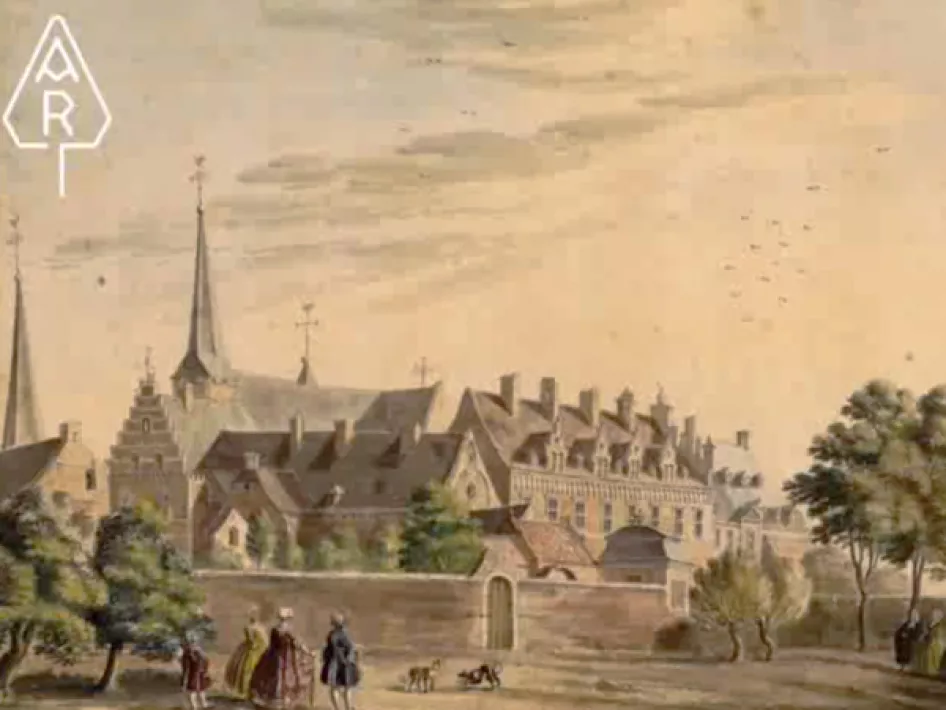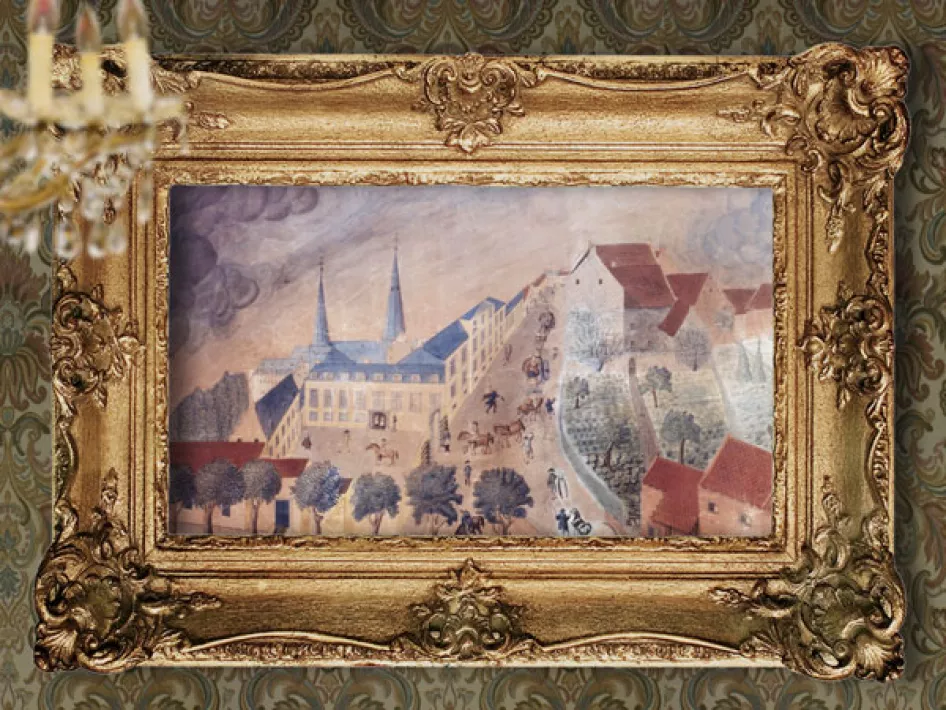Thorn Abbey was founded in the late tenth century by count Ansfridus. Ansfridus held rich possessions just south of the large rivers and in the northeast of modern-day Belgium. Together with his wife Hilsondis, countess of Strijen, who also held vast possessions in the area, he founded Thorn Abbey in the eastern part of their own land in the area known as Thorn (“que dicitur Torna” according to the official documents). With the Bishop of Liege’s approval, he made his daughter Benedicta the first abbess. Hilsondis’ remains are still kept in a lead coffin that can be seen in the church crypt.
During the 12th century the monastery become increasingly elite. Only ladies of Europe’s highest royal heritage were allowed to stay there. At the head of the monastery, known as a secular diocese as the rules and regulations were less strict, stood the abbess. She was in charge of a maximum of twenty ladies in the diocese. Secular canons, nearly always aristocrats themselves, took care of the religious ceremonies, supervised staff and helped the abbess with her administrative tasks. The canons received a ‘prebend’: an annual allowance awarded to the ladies out of the abbey’s proceeds. By investing some of this wealth into the diocese, the buildings surrounding the original abbey turned into a palace complex. On top of this, the diocese held vast estates in modern-day North-Brabant, Dutch and Belgian Limburg and even in Germany.
Under the reign of the last Princess-Abbes of Thorn, Maria Cunegonda of Saxony, the diocese and palace buildings were vastly expanded and modernized during the second half of the 18th century. Maria Kunigunde descended from one of the most prominent royal families of the German empire. She was the daughter of Archduchess Maria Josepha of Bavaria and Frederick Augustus III of Saxony. He was king of Poland from 1744 up to 1763 and Maria Kunigunde was given the title Princess of Poland, Lithuania and Saxony. She had a special bond with her brother Prince Clemens Wenceslaus of Saxony, the last Archbishop-Elector of Trier. Empress Maria Theresia of Austria was her mother’s niece; king Charles III of Spain and Maximilian III Joseph, Elector of Bavaria were her brothers-in-law. And king Louis XVI of France was her cousin. After much intrigue, in which her royal connections played a major role, she succeeded the Princess-Abbess, the countess Palatine Francisca Christina of Sulzbach who passed away aged 77 on the 16th of July 1776, having ruled over both Thorn and Essen. This is how Maria became the Princess-Abbess of both dioceses.
The arrival of the French revolutionary armies abruptly put an end to the residence of royal secular ladies as well as the role the diocese played as a centre for the highest aristocracy at a European level. All the Princess-Abbess’ property and the provincial chapter were forfeited by the French State and sold to the highest bidder. The buildings and the palace were bestowed the same fate. It was all demolished by the new owners and re-used as construction materials. Only the abbey was spared and is open to visitors! Take a look inside and taste the baroque atmosphere of the time that is still visible and can still be felt.
NOTE: The landmark (tile) is located on the side of the Hofferkitches restaurant in Thorn. Walk from the entrance on the right past the building to the tree on the square. There you will find the tile.
More information
www.abdijkerkthorn.nl
www.museumhetlandvanthorn.nl
Download the app
Visit other Archeo route Limburg locations



Archaeological site Thorn - The Abby of Thorn
Experience the history of Thorn Abbey on location. Download the app and come face to face with an virtual archaeologist on location. He tells you everything about the history of the abbey via modern virtual techniques. It is as if you are transforming into the past.
When
Always open.
Contact and location
Archeologische vindplaats Thorn - De abdij van Thorn
Hofstraat 12
6017 AK
Thorn
archeoroutelimburg